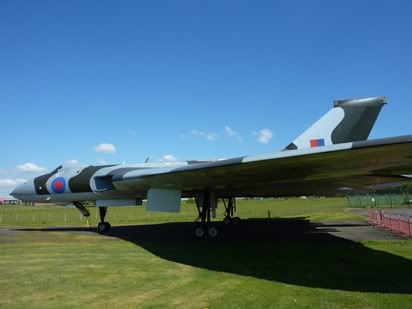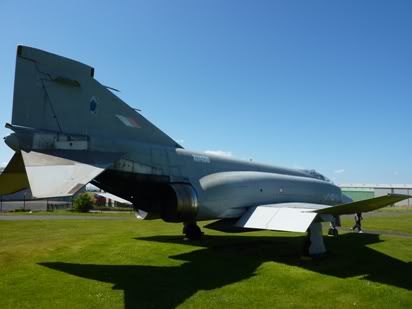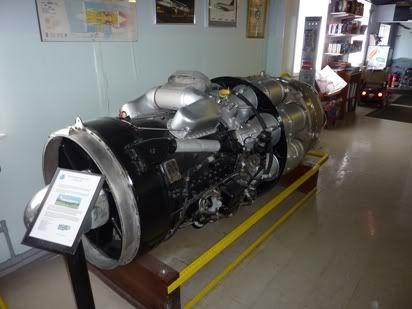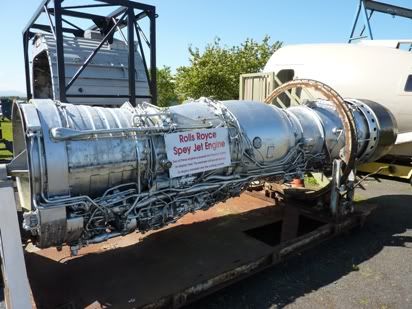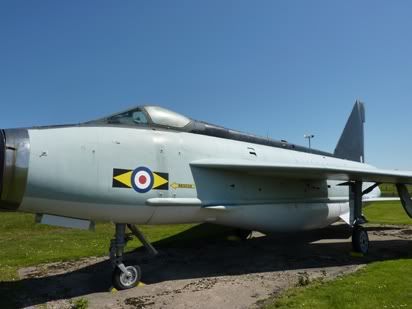Well, the weather still didn’t want to play ball. We turned up and if was broken cumulus with maybe the odd small gap in the cloud, but quite windy. The forecast wasn’t great and the wind was from the west or slightly to the north west. That ruled out a few of the airfields we looked at as they were single runway and generally oriented to the south west. I didn’t fancy taking on 10-15 kt crosswinds if I could avoid it, se we decided to stay closer to home and go to good old Shobdon again.
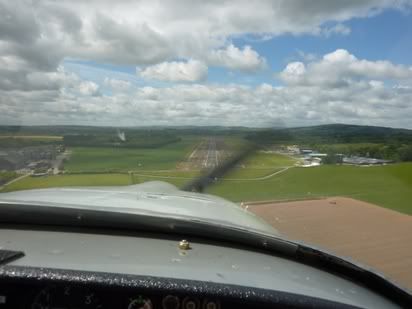
Final on 27 at Shobdon
I checked the plane while Neil got the now essential PPR after Shobdon got a b*ll*cking from the CAA for being ‘overloaded’, especially with the helicopter training now taking place at the airfield. Neil flew the leg going out and I flew coming back. The wind at Gloucester on take off was being given as 310 / 10, but it seemed stronger than that. At Shobdon, we indulged in lunch and had a chat with a few of the members of the G-EGBS RV12 group, as they spotted us landing in our ‘world famous’ RV6 (nowt to do with me, all down to Manuel who flew around the world in it).
They have a very interesting aircraft in that it is equipped with a Wilksch 3 cylinder 2 stroke engine that runs on Jet A1. In truth it is underpowered for the RV and gives a mere 110 kts in the cruise. But it does run on far cheaper fuel and even then barely sips that. They do have problems with the pre-combustion chambers and have to replace these every 50 hours, although this problem has now been fixed in the latest version of the engine (which also delivers more horse power, now up to a really useful 140 hp!). They also showed us there rather nice home made control lock, something we could definitely use on the RV6 (such are the exciting topics of conversation once pilots really start letting their hair down – boy, we really know how to party!). I can’t help but think that AVTUR engines are the way forward as AVGAS get more expensive and harder to come by at any price, but that time is not yet here. We will know that AVTUR engines have arrived when the notoriously conservative (and probably rightly so) flying schools start to switch over. I would guess this will be in 5 years time or so.
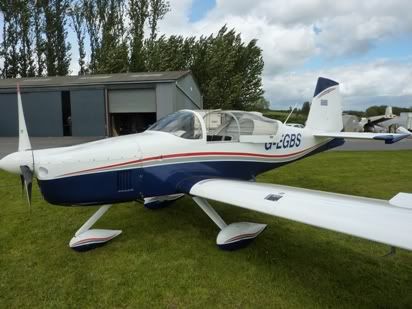
The Wilksch powered RV, a face that only a mother could love!
We also went into one of the hangars to have a look at the restoration work taking place on the Swallow – a very old and early monoplane with huge wings, exposed cockpits and an exposed radial engine.
We clambered in for my flight back. The wind seemed fairly stiff now, but it was at least straight down runway 27. Power checks complete, we waited for the glider tug to tow a glider aloft and for another glider to land on the grass runway. I trundled across to the hard runway, lined up and we were away. Neil used to fly out of Shobdon, so was very familiar with the airfield and helped me on the local noise abatement and to avoid the noise sensitive areas.
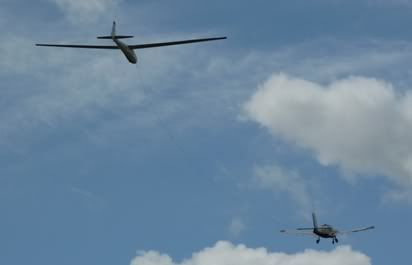
Busy with glider tow launches that day
I set course for Gloucester at around 2800’ as it wasn’t worth climbing to go ‘over’ the clouds for such a short hop. We are still running in the new cylinder, so we are flying the engine fairly hard, at least 65% power, but this is a bit more comfortable than the 75% power we were using for the first 25 hours at least! I diverted a little to the Malverns to have a quick play with them. I called up Gloucester, got the ATIS and was given the standard overhead for 27.
The plane was handling fine and I was feeling quite comfortable, despite not having flown for nearly a month. At three miles we were cleared to the downwind and warned of traffic also joining overhead. Neil and I both spotted the traffic and Neil kept an eye on it as I descended on the deadside (it is very easy to lose sight of the traffic as it appears below the horizon and is easily lost in the ‘ground’. We seemed to be spaced OK. I turned downwind as he was well downwind and tried to slow the RV up some more.
I turned base as he was on final and followed him around slightly further out than I would have flown myself. Power to nearly idle to bleed the airspeed off to the flap limiting speed. Flaps out and turn onto final and settle the airspeed down. The windsock seemed to show the wind only slightly off the centreline. Gloucester were giving 280 / 10, but I swear it seemed to be blowing more than that. I was settled on final as the traffic in front crossed the threshold so I called final. After a pause, I was cleared to ‘land-after’ as it was clear the traffic in front had missed the early turnoff and would roll to the end. I was quite happy to take a land-after as there is stacks of length on 27.
Over the displaced threshold, airspeed a bit above the normal 70kts IAS (the indicator over-reads slightly), so I knew I was in for a fair old hold off. Down and flare and hold off, and off and off. Stall warner starting, don’t let it land yet, make it holler (getting the usual conflicting visual clues from the strong wind where we seem to be crawling along the ground, but of course it is airspeed that matters!). Then we touch and stay touched – OK, pleased with that! I just miss the early turnoff as I don’t want to hammer the brakes and call for a short backtrack which is granted.
We trundle back to the ramp and park up, taking care on taxi doe to the winds. It ain’t over with a taildragger until it’s locked up in the hangar or chocked and tied down (preferably both!).
Nice flight, but a short one. Still it will do for now. Next definite booking is 11th June to Pershore.
Neil and I went into a huddle in Cotswold Aero club planning the route of our joint tour around Denmark and Sweden at the end of June. We got the legs finalised and agreed who would fly what leg and who would plan what leg. We bought all but one of the required Jeppesen charts and Neil will have first go with them and the planning. At home that evening, I finally purchased the full version of Sky Demon and effortlessly planned all of the legs just for fun – boy this program really makes it easy! Looking forward to it already – pray for the weather (as usual)!
